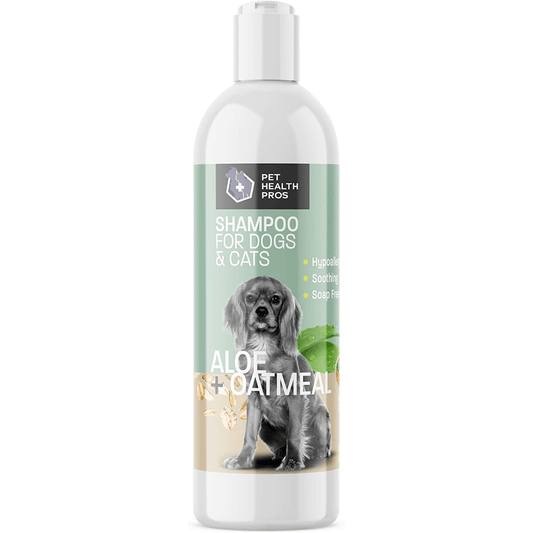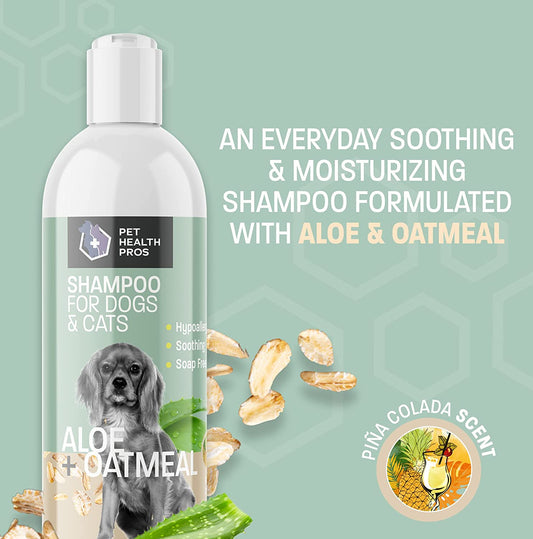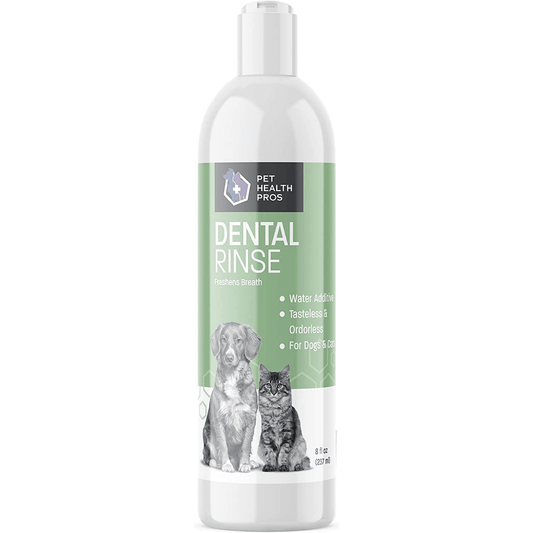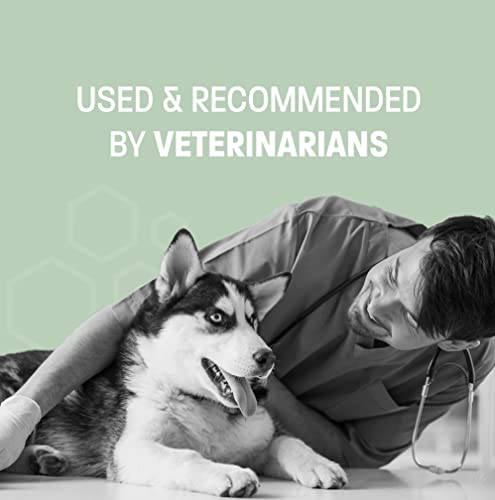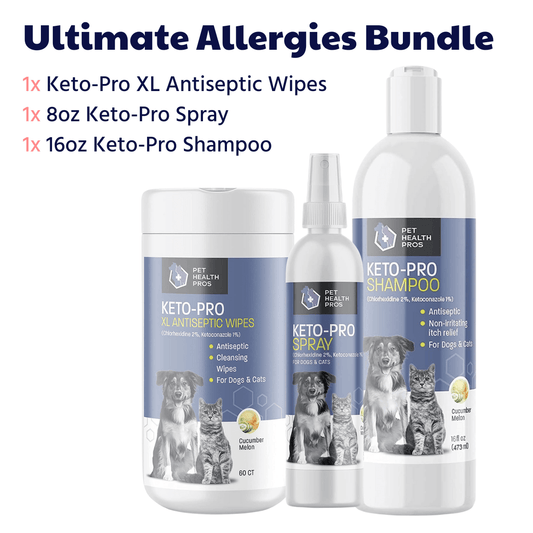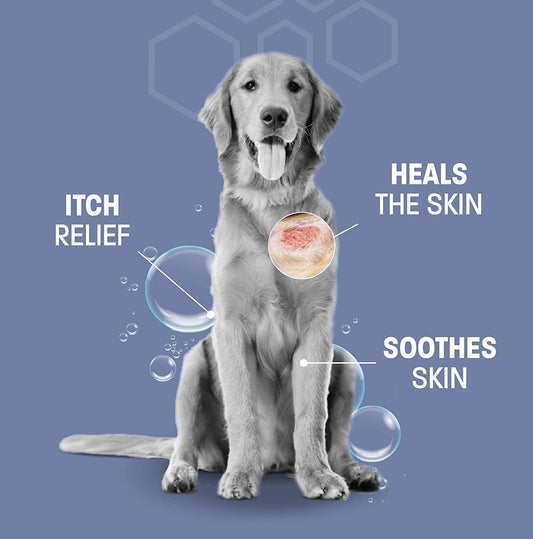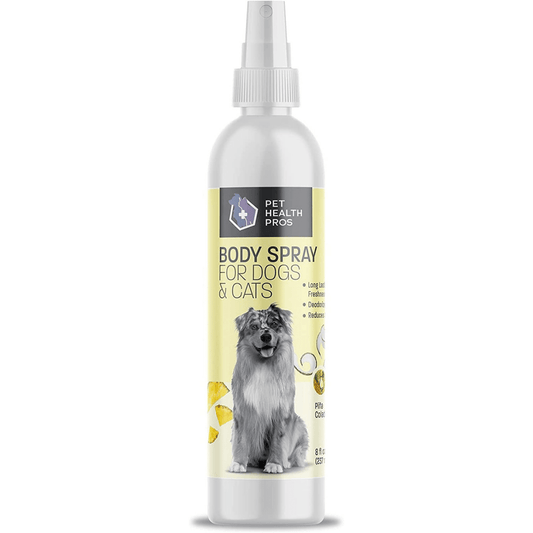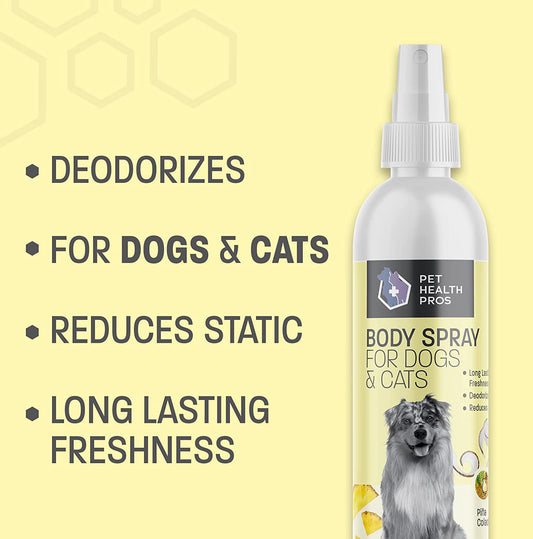Ever come home to find your favorite shoes chewed up by your furry friend? It's a common problem many dog owners face. Instead of buying expensive sprays, why not make your own? This guide will show you how to create a homemade anti-chewing spray for dogs. It's simple, cost-effective, and uses ingredients you probably already have at home.
Key Takeaways
- Understanding why dogs chew can help in addressing the problem.
- Homemade anti-chewing sprays can be made with safe household ingredients.
- Essential oils can be harmful to dogs and should be avoided.
- Regular application and monitoring are key to effectiveness.
- Providing alternatives like chew toys can reduce unwanted chewing.
Understanding Why Dogs Chew
Common Reasons for Chewing Behavior
Dogs chew for a variety of reasons, and understanding these can help address the behavior. Puppies, for instance, chew to relieve the discomfort of teething. For adult dogs, chewing can be a way to relieve boredom or anxiety. Some dogs find chewing to be a comforting activity that helps them cope with separation anxiety when their owners are away. Recognizing these underlying causes is crucial in managing and redirecting chewing habits effectively.
How Chewing Affects Dog Health
Chewing isn't always a bad thing. In fact, it can be beneficial for your dog's health. Chewing helps keep their teeth clean and strengthens their jaws. However, if a dog chews on inappropriate items, it can lead to dental damage or gastrointestinal issues if they swallow something harmful. Providing safe chew toys can help maintain dental health while preventing destructive chewing.
Identifying Problematic Chewing
Not all chewing is problematic, but it's important to know when it is. If your dog is destroying furniture, shoes, or other valuables, it's time to intervene. Identifying the triggers, like stress or lack of exercise, can be the first step in addressing the issue. Engaging your dog with mental stimulation and physical activity can often reduce the urge to chew on inappropriate items.
Understanding why dogs chew is the foundation for tackling this behavior. By addressing the root causes and providing appropriate outlets, you can help your dog lead a happier, more fulfilling life.
Ingredients for Homemade Anti Chewing Spray
Safe Ingredients for Dogs
When you're crafting a homemade anti-chewing spray, it's crucial to use ingredients that are safe for dogs. Vinegar and citrus juices are popular choices because they are natural deterrents due to their strong scents. Dogs typically dislike the smell of vinegar and citrus, making them effective in discouraging chewing. Apple cider vinegar is often preferred for its milder scent compared to white vinegar.
Common Household Ingredients
You don't need to go far to find what you need for your spray. Most ingredients are likely already in your kitchen. Here's a simple list:
- Vinegar: Either white or apple cider vinegar works well.
- Citrus Juice: Lemon or lime juice are effective options.
- Water: Used to dilute the strength of the vinegar and citrus.
These ingredients are not only effective but also budget-friendly, making them a great choice for pet owners looking to save money.
Essential Oils to Avoid
While essential oils can be beneficial in some cases, they can also be harmful to dogs. It's important to avoid oils like tea tree, cinnamon, and peppermint, as they can cause adverse reactions. Always ensure that any oil used is diluted and safe for pets. For more tailored advice on pet care, consider using Pet Genius, which offers personalized guidance and insights for your furry friends.
Crafting a homemade anti-chewing spray is not only easy but also a great way to ensure you're using safe ingredients for your dog. Always test a small area first to ensure there's no allergic reaction.
Step-by-Step Guide to Making the Spray
Gathering Your Materials
Before you get started, make sure you have everything you need. You'll need a spray bottle, white vinegar, apple cider vinegar, and water. These are your basic ingredients. You might also want to add a few drops of citrus essential oil, but be careful—some oils aren't safe for dogs.
Mixing the Ingredients
Once you've gathered your materials, it's time to mix them. Here's a simple recipe you can follow:
- Vinegar Base: Mix equal parts of white vinegar and apple cider vinegar. This forms the base of your spray.
- Add Water: Dilute the vinegar mixture with water. A good ratio is 1:1:1 for vinegar and water.
- Optional: Add a few drops of citrus essential oil, but make sure it's safe for dogs first.
Proper Storage of the Spray
After mixing, pour the solution into a spray bottle. Store it in a cool, dry place. Make sure the bottle is labeled clearly, so you don’t mix it up with other household cleaners.
Keeping your spray handy ensures you're always ready to tackle unwanted chewing. Just remember, the fresher the spray, the more effective it will be.
How to Apply the Anti Chewing Spray
Choosing the Right Areas to Spray
When using your homemade anti-chewing spray, it's important to target the areas where your dog tends to chew the most. Focus on areas like furniture legs, shoes, and specific spots your dog seems to favor. Make sure to avoid spraying on items that your dog needs to chew, like their chew toys. Spraying the wrong items can confuse your dog and might even lead to more chewing.
Frequency of Application
Applying the spray regularly is key to its effectiveness. Initially, you might need to spray the targeted areas daily. As your dog learns to avoid these areas, you can reduce the frequency. Keep an eye on your dog's behavior and adjust the application schedule accordingly.
Monitoring Your Dog's Reaction
After applying the spray, observe your dog's reaction. Some dogs might need a little time to get used to the new scent, while others might avoid the sprayed areas immediately. If your dog seems unaffected, consider tweaking the formula slightly to make it more effective. Remember, each dog is different, and what works for one might not work for another.
Regular observation and patience are crucial when using anti-chewing sprays. Adjusting the formula and application as needed will help ensure the spray is both safe and effective for your pet.
Additional Tips for Preventing Chewing
Providing Chew Toys
Dogs naturally have a need to chew, and providing them with appropriate chew toys can satisfy this urge. Chew toys not only keep your dog entertained but also help in maintaining their dental health. Look for toys that are durable and safe, avoiding those that can easily break apart and become a choking hazard. Rotate the toys regularly to keep your dog's interest high.
Training Techniques
Training your dog to understand what is acceptable to chew and what isn't can be very effective. Start with basic commands like "leave it" or "no," and reward your dog when they respond correctly. Consistency is key, so make sure everyone in the household follows the same rules. Positive reinforcement, such as treats or praise, can help reinforce good behavior.
Creating a Chew-Free Environment
Sometimes, the best way to prevent unwanted chewing is by managing the environment. Remove tempting items from your dog's reach, such as shoes, remote controls, or children's toys. Baby gates can be useful to block off areas where chewing is a problem. Additionally, using a deterrent spray, like one made with apple cider vinegar, can discourage your dog from chewing on furniture or other household items.
Creating a safe space for your dog can significantly reduce unwanted chewing behavior. It's about balancing freedom with boundaries to ensure your dog is both happy and well-behaved.
Safety Precautions When Using Homemade Sprays
Testing for Allergic Reactions
Before you start using your homemade anti-chewing spray, it's a good idea to test it out on a small area first. This helps to ensure your dog won't have an allergic reaction. Just like people, dogs can have sensitivities to certain ingredients. Apply a tiny amount of the spray on a patch of your dog's fur and wait 24 hours to see if there's any redness or irritation. If everything looks fine, you can proceed with using the spray more broadly.
Avoiding Sensitive Areas
When applying the anti-chewing spray, it's crucial to avoid sensitive areas like your dog's eyes, nose, and mouth. These areas can be particularly vulnerable to irritation. Instead, focus on spraying objects or areas where your dog tends to chew. This way, you minimize any risk of discomfort while still addressing the chewing behavior.
Consulting with a Veterinarian
If you're unsure about any ingredient or if your dog has a history of allergies, it's wise to consult with your veterinarian before using the spray. They can provide guidance on safe ingredients and may suggest alternatives if needed. Veterinarians have the expertise to help you tailor a solution that fits your dog's specific needs.
Making a homemade anti-chewing spray can be a great way to manage your dog's chewing habits without resorting to harsh chemicals. However, safety should always come first. By taking the time to test for allergies, avoiding sensitive areas, and consulting with a vet, you can ensure that your solution is both effective and safe for your furry friend.
Evaluating the Effectiveness of Your Spray
Signs of Reduced Chewing
Once you've started using your homemade anti-chewing spray, it's important to keep an eye on your dog's behavior. Notice any decrease in chewing on furniture, shoes, or other household items? That's a positive sign! You might see your dog sniffing the area and then walking away, which means the spray is doing its job.
Adjusting the Formula
If your dog seems unfazed by the spray, it might be time to tweak the formula. Sometimes a stronger concentration is needed, or perhaps a different combination of ingredients will work better. Don't hesitate to experiment a bit until you find what works best for your furry friend.
When to Seek Professional Help
If the chewing persists despite your best efforts, it might be wise to consult a professional. A veterinarian or a pet behaviorist can offer insights into underlying issues that might be causing the behavior. Sometimes, chewing is a symptom of anxiety or other health concerns that need attention.
Remember, every dog is different, and what works for one might not work for another. Patience and persistence are key when trying to curb unwanted chewing habits.
Wrapping It Up
So there you have it, a simple guide to making your own anti-chewing spray for your furry friend. It's pretty straightforward, right? With just a few ingredients you probably already have at home, you can whip up a spray that helps keep your dog from gnawing on things they shouldn't. Remember, every dog is different, so it might take a little trial and error to find what works best for your pup. But don't worry, with patience and consistency, you'll get there. Plus, it's a great way to save some bucks and know exactly what's in the product you're using. Happy crafting, and here's to a chew-free home!
Frequently Asked Questions
Why do dogs chew on things?
Dogs chew for various reasons, including boredom, teething, or anxiety. Chewing helps them explore the world and can soothe their gums when they're teething.
Is it safe to use essential oils in homemade sprays?
Some essential oils can be harmful to dogs. It's important to research and choose oils that are safe, like lavender or chamomile, and avoid those like tea tree or eucalyptus.
How often should I apply the anti-chewing spray?
You can apply the spray as often as needed, especially in areas where your dog frequently chews. Monitor your dog's reaction and adjust usage accordingly.
What if my dog continues to chew despite using the spray?
If the spray doesn't work, consider trying different ingredients or consulting with a veterinarian for further advice. Providing chew toys and training can also help.
Can homemade sprays cause allergic reactions in dogs?
Yes, some dogs might be sensitive to certain ingredients. Always test a small amount on your dog's skin first and wait to see if there's any reaction.
Are there other ways to stop my dog from chewing?
Yes, providing plenty of chew toys, engaging in regular training, and creating a safe environment can help reduce unwanted chewing behaviors.


